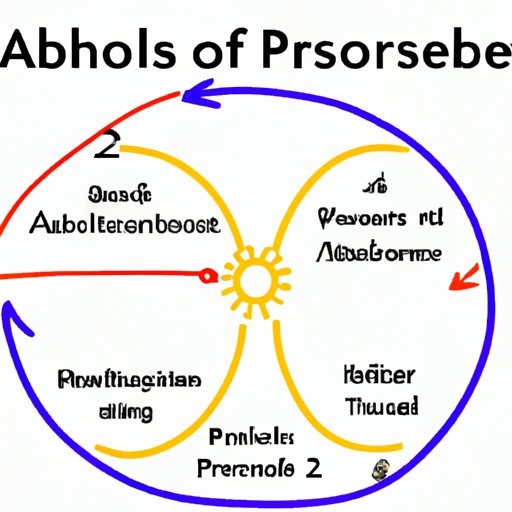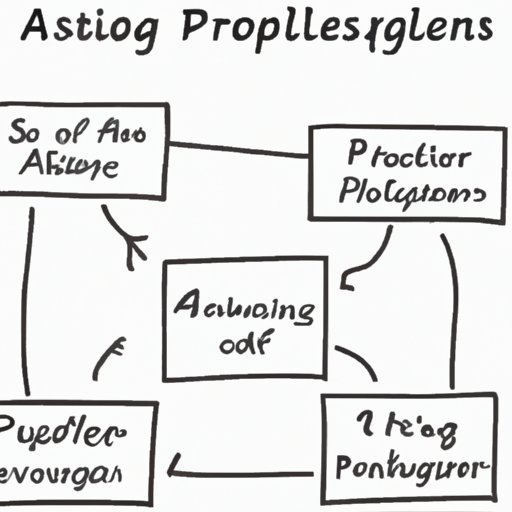Introduction
A3 problem solving is a powerful problem-solving method developed by Toyota Motor Corporation. It is used to identify, analyze, and resolve problems in an efficient and effective manner. The goal of A3 problem solving is to quickly identify issues, develop solutions, and implement changes that will improve an organization’s performance. This article provides an overview of the A3 problem solving method, including its components, process, and benefits.

Exploring the A3 Problem Solving Methodology: An Overview
The A3 problem solving methodology is based on the idea that any problem can be broken down into smaller parts, which can then be addressed one at a time. By breaking down the problem into smaller parts, it becomes easier to identify and resolve the root cause of the issue. Additionally, the A3 problem solving method encourages collaboration and allows for greater flexibility when developing solutions.
Understanding the Components of A3 Problem Solving
The A3 problem solving method consists of four key components: problem definition, current state analysis, goal setting, and action planning. Each component plays an important role in the problem-solving process.
- Problem Definition: This is the first step in the A3 problem solving process. During this phase, the team identifies and defines the problem they are trying to solve.
- Current State Analysis: In this phase, the team collects data and examines the current state of the problem. This helps to identify potential underlying causes and allows the team to develop a better understanding of the issue.
- Goal Setting: Once the team has identified the problem and gathered data, they set goals to address the issue. These goals should be both achievable and measurable.
- Action Planning: The final step in the A3 problem solving process is to develop an action plan. This plan outlines the steps that need to be taken to achieve the goals that have been set.
Examining the Process of A3 Problem Solving
The A3 problem solving process is designed to help teams quickly and effectively identify and resolve problems. The process begins with the team defining the problem and gathering data to analyze the current state of the problem. Once the team has identified the root cause of the issue, they set achievable and measurable goals and develop an action plan to address the problem. Finally, the team implements the action plan and evaluates the results.

How to Use A3 Problem Solving to Identify and Resolve Problems
Using the A3 problem solving method can help organizations identify and resolve problems quickly and efficiently. Here are some tips for using A3 problem solving to address issues:
Developing an Action Plan
The action plan is the most important part of the A3 problem solving process. It outlines the steps that need to be taken to achieve the goals that have been set. When developing an action plan, it is important to consider the resources available, the timeline for completion, and any potential risks or obstacles that may arise.
Identifying Root Causes of Problems
It is important to identify the root cause of a problem before attempting to solve it. This can be done by examining the data collected during the current state analysis phase and looking for patterns or trends. By identifying the root cause of a problem, it becomes easier to develop an effective action plan.
Analyzing Data and Evaluating Solutions
Data analysis is an important part of the A3 problem solving process. After the action plan has been implemented, it is important to analyze the data and evaluate the results. This helps to ensure that the problem has been resolved and that the solution is effective. Additionally, it provides valuable insight into the efficacy of the A3 problem solving method.
A3 Problem Solving: A Step-by-Step Guide
The A3 problem solving method is a powerful tool for identifying and resolving problems. Here is a step-by-step guide to using A3 problem solving:
Preparing for A3 Problem Solving
Before beginning the A3 problem solving process, it is important to prepare. This includes gathering all relevant information, creating a timeline for completion, and assigning tasks to team members. This ensures that the team is ready to begin the problem-solving process.
Gathering Information
The next step is to gather information about the problem. This includes collecting data, examining the current state of the issue, and identifying potential root causes. This helps to provide a better understanding of the problem and allows the team to develop an effective action plan.
Creating an A3 Document
Once the team has gathered all the necessary information, they should create an A3 document. This document outlines the problem, current state analysis, goals, and action plan. The A3 document serves as a reference point throughout the problem-solving process and helps to keep the team focused on the task at hand.
Presenting the Solution
Once the team has developed an action plan, they should present their solution. This can be done in a variety of ways, such as a presentation or report. Presenting the solution allows the team to get feedback from stakeholders and helps to ensure that the solution is effective.

Benefits of Implementing A3 Problem Solving in Your Organization
Implementing A3 problem solving in your organization can provide numerous benefits, including improved efficiency, increased quality, and greater collaboration. Here are some of the key benefits of using A3 problem solving:
Improved Efficiency
A3 problem solving can help organizations become more efficient. By breaking down problems into smaller parts and focusing on the root cause, teams can identify and resolve issues quickly and effectively. This reduces the amount of time and resources needed to address the problem, resulting in improved efficiency.
Increased Quality
A3 problem solving can also help organizations increase the quality of their products and services. By identifying and addressing problems early on, teams can prevent issues from becoming larger and more costly. Additionally, the data analysis portion of the process helps to ensure that the solutions developed are effective.
Greater Collaboration
The A3 problem solving method encourages collaboration among team members. By working together to identify and resolve problems, teams can develop creative solutions and gain a better understanding of the issue. This leads to improved communication and better decision-making.
Examples of A3 Problem Solving in Action
A3 problem solving can be used in a variety of industries and situations. Here are some examples of A3 problem solving in action:
Example 1: Automotive Manufacturing Plant
At an automotive manufacturing plant, the A3 problem solving method was used to identify and resolve an issue with the assembly line. The team gathered data, identified the root cause of the problem, and developed an action plan to address the issue. As a result, the team was able to reduce downtime and improve the quality of the vehicles produced.
Example 2: Healthcare Facility
At a healthcare facility, A3 problem solving was used to identify and resolve an issue with patient wait times. The team gathered data, identified the root cause of the problem, and developed an action plan to address the issue. As a result, the facility was able to reduce wait times and improve patient satisfaction.
Example 3: IT Department
In an IT department, the A3 problem solving method was used to identify and resolve an issue with network performance. The team gathered data, identified the root cause of the problem, and developed an action plan to address the issue. As a result, the department was able to improve network performance and reduce latency.
Conclusion
The A3 problem solving method is a powerful tool for identifying and resolving problems. By breaking down problems into smaller parts, teams can identify and address the root cause of an issue. Additionally, the A3 problem solving method encourages collaboration and allows teams to develop creative solutions. Implementing A3 problem solving in your organization can provide numerous benefits, including improved efficiency, increased quality, and greater collaboration.
(Note: Is this article not meeting your expectations? Do you have knowledge or insights to share? Unlock new opportunities and expand your reach by joining our authors team. Click Registration to join us and share your expertise with our readers.)
